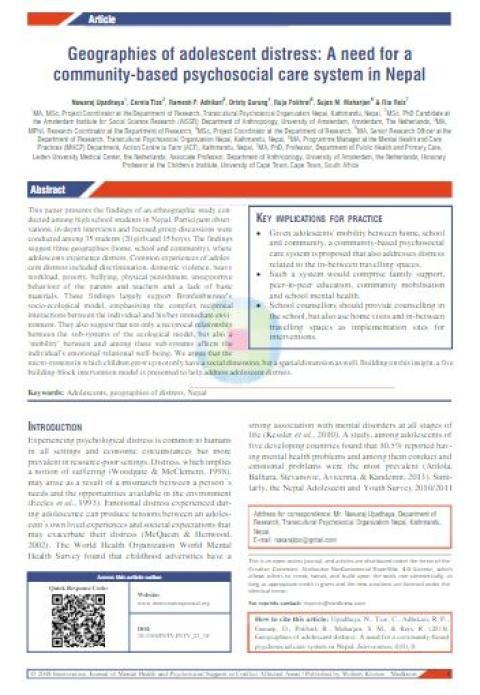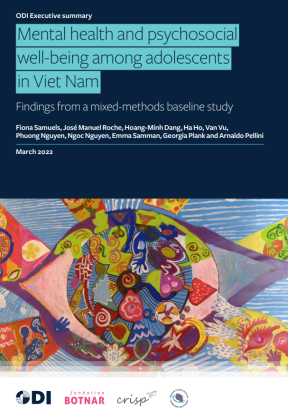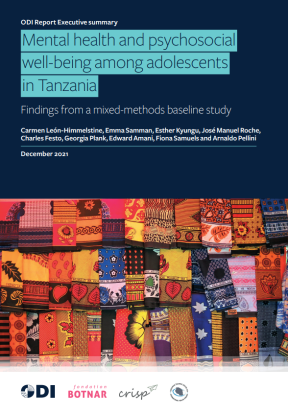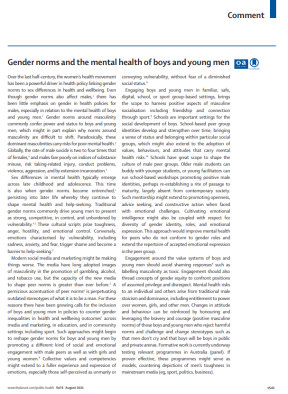- Journal article
- 12 October 2018
Geographies of adolescent distress: A need for acommunity-based psychosocial care system in Nepal
- Author: Nawaraj Upadhaya et al.
- Published by: Academia

This paper presents the findings of an ethnographic study conducted among high school students in Nepal. Participant observations, in-depth interviews and focused group discussions were conducted among 35 students (20 girls and 15 boys). The findings suggest three geographies (home, school and community), where adolescents experience distress. Common experiences of adolescent distress included discrimination, domestic violence, heavy workload, poverty, bullying, physical punishment, unsupportive behaviour of the parents and teachers and a lack of basic materials. These findings largely support Bronfenbrenner’s socio-ecological model, emphasising the complex reciprocal interactions between the individual and his/her immediate environment. They also suggest that not only a reciprocal relationship between the sub-systems of the ecological model, but also a ‘mobility’ between and among these sub-systems affects the individual’s emotional-relational well-being. We argue that the micro-systems in which children grow up not only have a social dimension, but a spatial dimension as well. Building on this insight, a five building-block intervention model is presented to help address adolescent distress.
- Countries / Regions:
- Nepal
Report
18 March 2022

Report
14 December 2021

Journal article
1 August 2021
